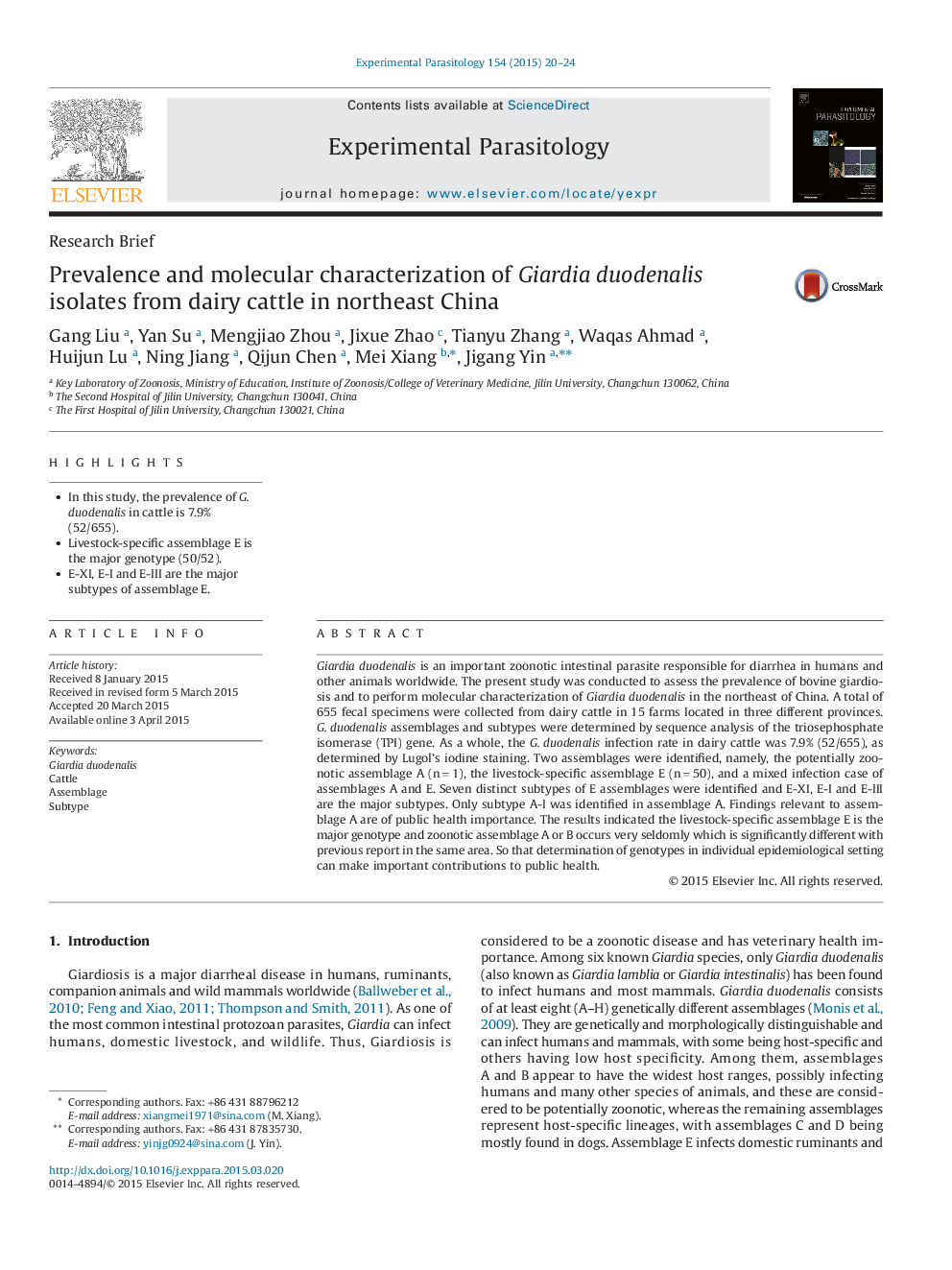| Article ID | Journal | Published Year | Pages | File Type |
|---|---|---|---|---|
| 6290860 | Experimental Parasitology | 2015 | 5 Pages |
â¢In this study, the prevalence of G. duodenalis in cattle is 7.9% (52/655).â¢Livestock-specific assemblage E is the major genotype (50/52).â¢E-XI, E-I and E-III are the major subtypes of assemblage E.
Giardia duodenalis is an important zoonotic intestinal parasite responsible for diarrhea in humans and other animals worldwide. The present study was conducted to assess the prevalence of bovine giardiosis and to perform molecular characterization of Giardia duodenalis in the northeast of China. A total of 655 fecal specimens were collected from dairy cattle in 15 farms located in three different provinces. G.âduodenalis assemblages and subtypes were determined by sequence analysis of the triosephosphate isomerase (TPI) gene. As a whole, the G.âduodenalis infection rate in dairy cattle was 7.9% (52/655), as determined by Lugol's iodine staining. Two assemblages were identified, namely, the potentially zoonotic assemblage A (nâ=â1), the livestock-specific assemblage E (nâ=â50), and a mixed infection case of assemblages A and E. Seven distinct subtypes of E assemblages were identified and E-XI, E-I and E-III are the major subtypes. Only subtype A-I was identified in assemblage A. Findings relevant to assemblage A are of public health importance. The results indicated the livestock-specific assemblage E is the major genotype and zoonotic assemblage A or B occurs very seldomly which is significantly different with previous report in the same area. So that determination of genotypes in individual epidemiological setting can make important contributions to public health.
